Ukrainian software development market in wartime
The article highlights the main changes and trends in the Ukrainian software development market caused by the full-scale military invasion that started in February 2022.
Some uncertainty and risk are inherent in any economic activity or project, and software development projects are no exception. In fact, the very nature of a project, as a temporary endeavour undertaken to create a unique result, assumes that each new project takes place under circumstances that cannot be fully predicted.
It is no coincidence that surveys show that 75% of respondents in the IT industry believe their projects are doomed to fail from the beginning. Even for tech giants like IBM, only 40% of projects meet the key parameters of schedule, budget, cost and quality.
This article explains how the risk management process is organised in software development projects and how to build appropriate cooperation and communication between project stakeholders to mitigate risk and achieve the expected project outcomes.
The risk management process is based on ISO 31000 and PMBOK, the industry standards for risk management and project management. Here it is helpful to define a few basic terms.
First, individual project risk is an uncertain event or condition that, if it occurs, has a positive or negative effect on one or more project objectives. Overall project risk is the effect of uncertainty on the project as a whole, arising from all sources of uncertainty, including individual risks. It is important to note that risk does not necessarily affect project outcomes negatively. Risks with positive effects are called opportunities. Though risk management has an identical process for both negative and positive risks, this article focuses on negative risks.
Understanding risk management makes it easier for project stakeholders to effectively interact with the development team with regard to risks. Let’s consider ways to classify and systematise possible risks.
Risk categorisation makes it possible to classify and systematise individual risks. The risk breakdown structure (RBS) is widely used to break down potential sources of individual project risks to avoid gaps and blind spots. Risk categories can be split by source and area of influence.
Risk sources are fundamental drivers to cause both internal and external project risks. Typically, risks can be divided by source into the following ones:
Precise risk categorisation helps to identify all potential threats and to implement effective risk responses, allowing teams to focus on the riskiest areas. It is also helpful in developing generic response scenarios for risks in the same category. The risk categories usually listed for the areas of influence are:
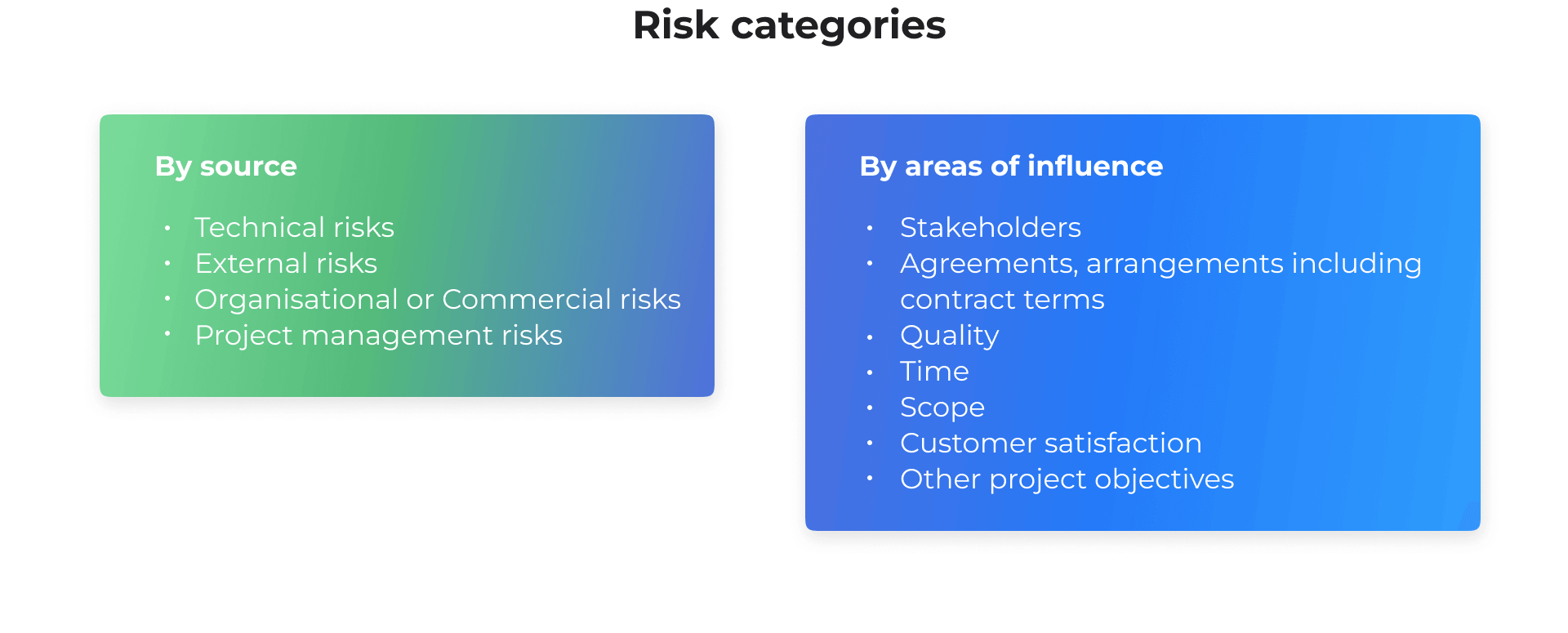
The most influential factors in software development projects include:
The methods and techniques used to identify and respond to risks are commonly called risk management. According to project management statistics, 27% of organisations always apply risk management, while 35% do so periodically.
Based on our observations, insufficient experience is a common reason why IT companies practise risk management unsystematically or not at all. Scrum teams are commonly self-organising and cross-functional. Therefore, they lack risk mitigation knowledge and do not focus on utilising experience from past projects or ensuring proper communication.
The SSA Group Project Management Office (PMO) developed a universal risk management model applicable to projects utilising any methodology. The project manager (PM) plays a key role in this process, having expertise not only in risk management theory but also in leadership, coaching team members and facilitating the risk management process. The PM provides expertise in risk handling in collaboration with the development team and subject matter experts. Given their experience in risk mitigation from previous projects, the PM is prepared to handle highly specific risks.
We follow the Project Management Institute (PMI) recommendations and consider every stakeholder a potential valuable participant in risk management. During the project planning phase, we determine the project stakeholders and their roles in risk management. The list of stakeholders depends on the project and their engagement and responsibilities may change throughout the risk management cycle.
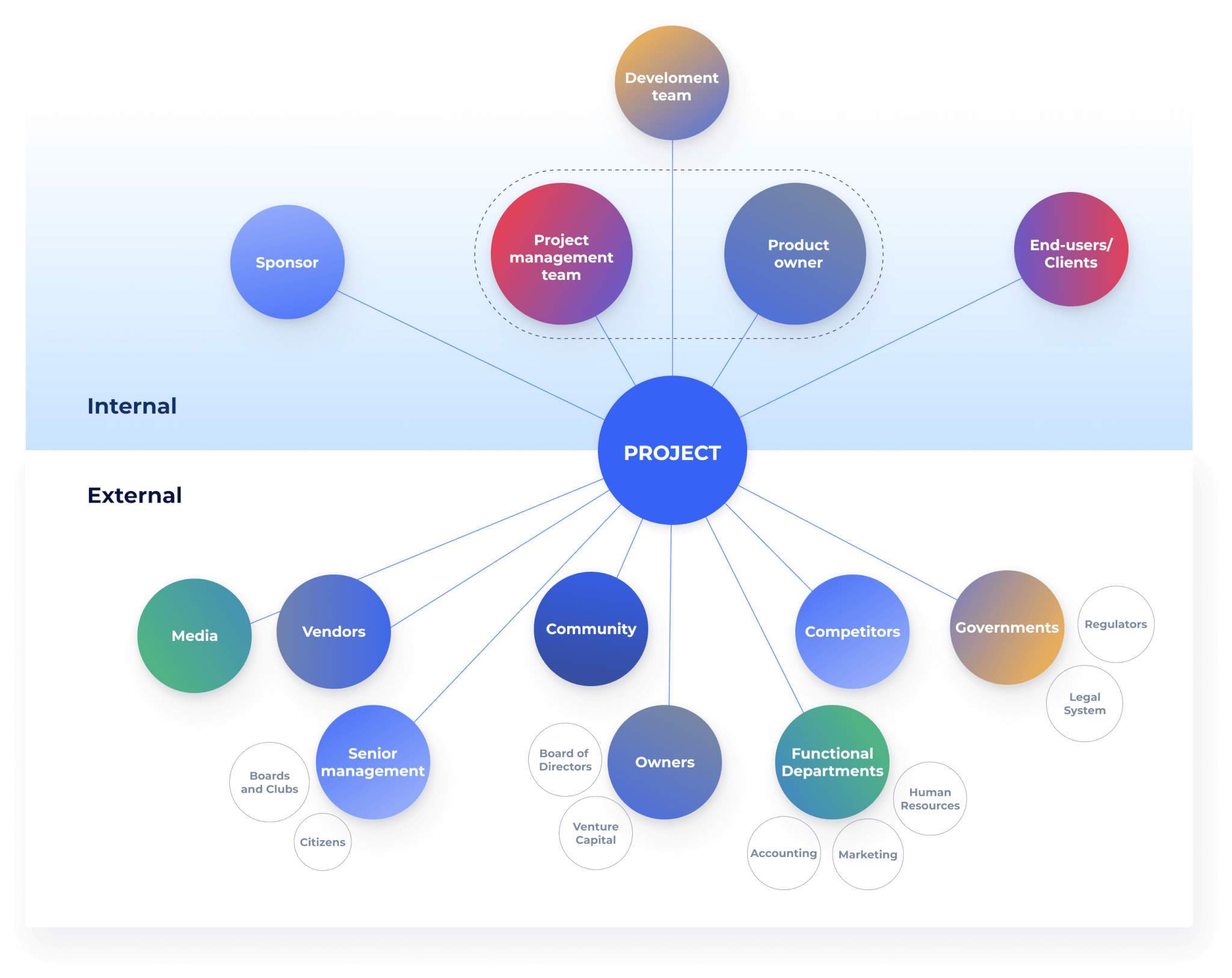
The risk management process consists of the following elements:
The product owner’s involvement at this stage is crucial as new threats may emerge that need to be taken into consideration or changes may need to be made to the existing response plans.
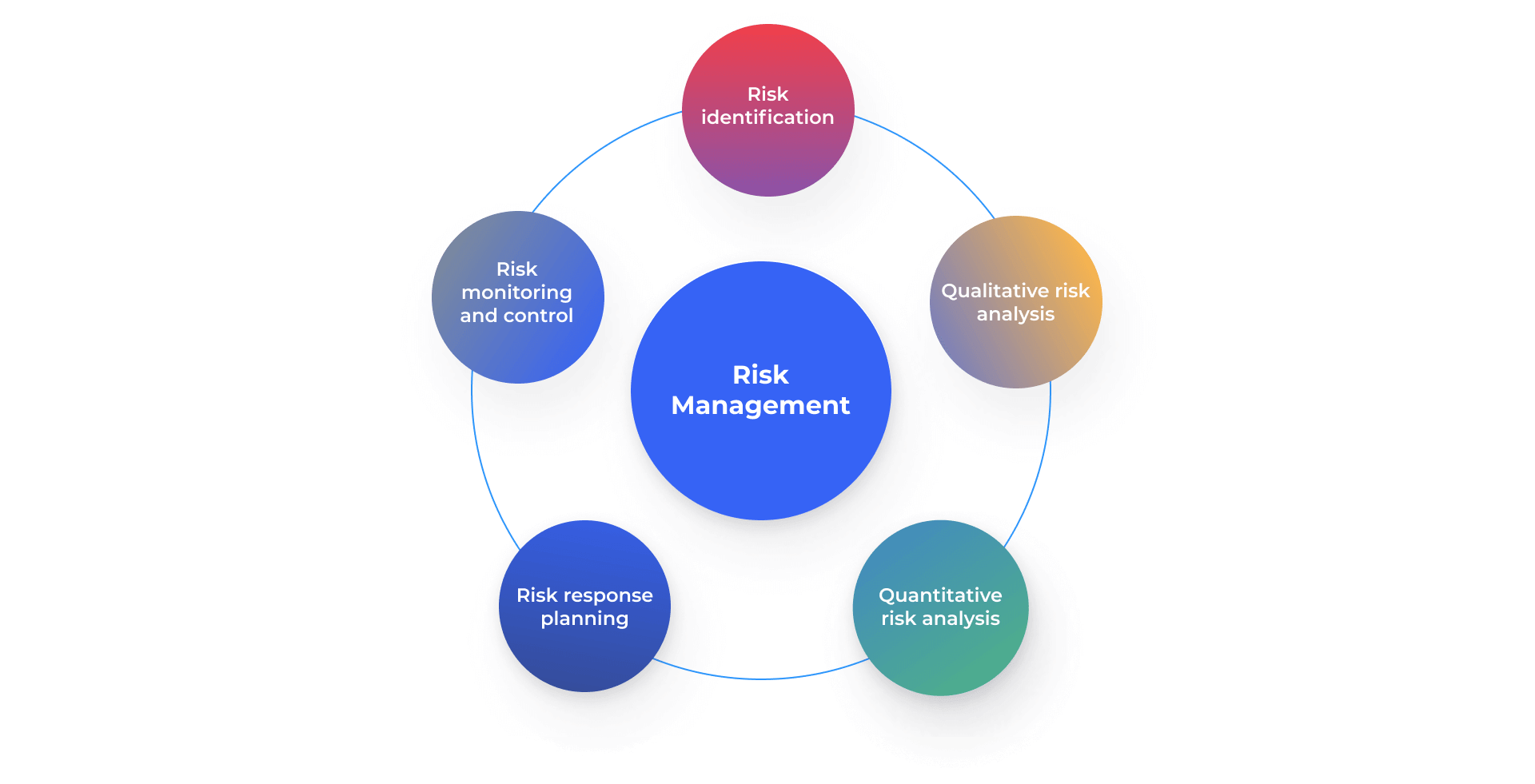
Let’s take an e-commerce website as an example to understand how the risk management cycle works. We can determine the main project stakeholders as follows:
Marketing experts provide requirements for the project team, such as analytic integrations, advertising tools, social media, CRMs and so forth. This, in turn, makes them risk owners for all issues related to keeping versions of these marketing tools up-to-date and monitoring their operability. Thus, this stakeholder has a leading role at the Risk identification stage and actively participates in Risk response planning as a Risk owner with the relevant expertise, as well as in the Risk monitoring and control stage.
During the risk management process in SSA Group, each stakeholder has the responsibilities described in the table below.
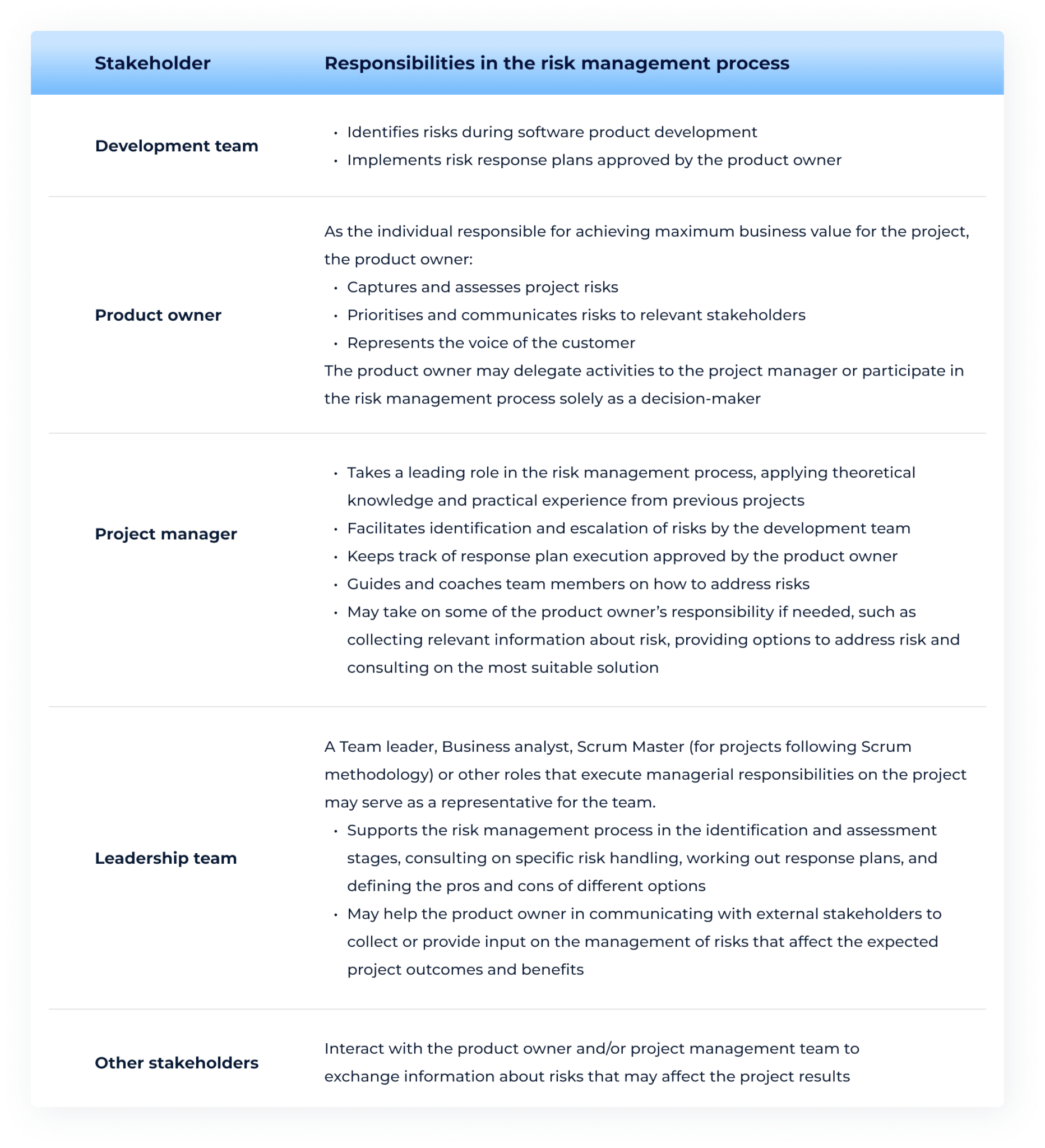
Risk mitigation planning is carried out to increase advantages and reduce threats to achieving the project objectives in software development. The primary aim is to keep the risks within an acceptable range and establish some containment measures for project implementation.
Here is a brief overview of the principal risk mitigation strategies:
These main strategies and their combinations are the basis for risk mitigation of software development projects and have proven effective in practice.
Risk management is a component of effective project management, the value of which cannot be overestimated. According to PMI research, an average of 11.4% of investments are wasted due to poor project performance. IT service providers with mature value-delivery operations outperform less mature organisations across key project metrics:
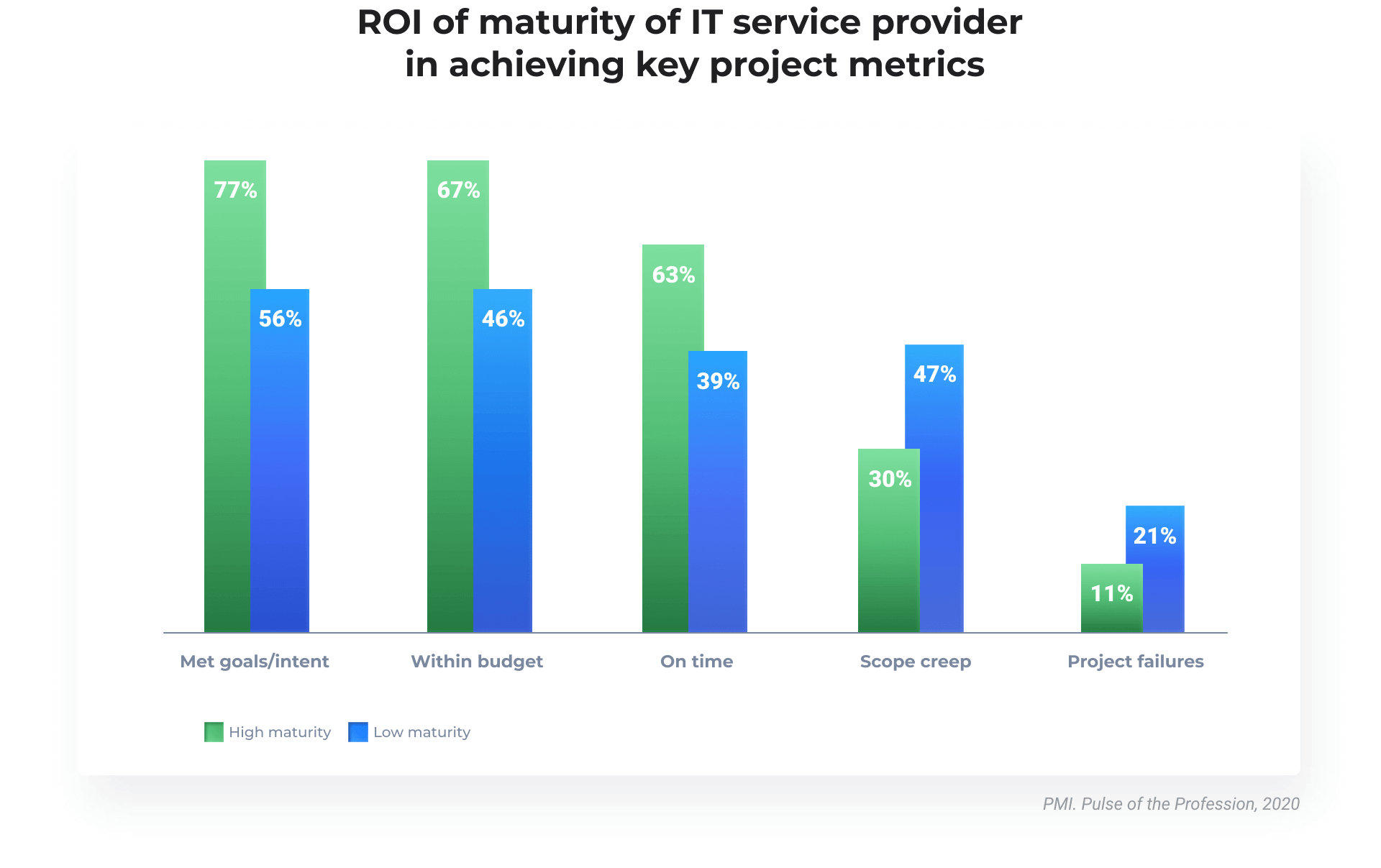
Risk management skills and relevant experience create significant advantages for software development projects. SSA Group’s PMO approach is built on experience, proving that absolutely any project has a set of potential risks as possible events in future and the project’s success depends on the ability to manage them. Inevitably, some project risks may occur and others may not. However, being prepared in advance gives us an advantage in achieving the required project outcomes.
Considering risk mitigation as one of the key project management processes and best practices in this area, SSA Group provides the following tips for our clients.
In the SSA Group project team structure, a project manager facilitates and establishes the risk management process and identification, assesses risks, and creates and monitors response plans. However, experience has proven that engaging other team members is invaluable. Depending on project specification, risks and response plan, the project manager will coordinate risk mitigation activities with stakeholders and involve them in the process. The primary focus is on risks that have the most significant impact and consequences or that directly or indirectly affect the project’s objectives, including quality, schedule, costs, scope, and client expectations.
Such an approach allows us to gather all the necessary experience for the project (technical, business, and organisational) to identify risks, reasonably assess them and propose optimal response plans.
Knowledge sharing and mentoring within the project team help increase specific project knowledge and skill building more quickly. The knowledge keepers may be the project management and development team members, the product owner or other stakeholders who also contribute significantly to the project’s success.
The project manager’s role is to ensure the accumulation of project knowledge within the development team. Such an approach helps to:
This approach may be implemented as long as:
Project infrastructure, engineering and managerial processes all contribute to achieving project results. Infrastructure must be stable and reliable and contain all the necessary elements for software development processes and product operation.
Engineering and management processes are instruments for addressing risk. This has numerous implications:
The project manager ensures that risks are adequately reflected in the project documentation, particularly the project charter, risk register, and risk management plan.
One of the most significant instruments in our risk management system is regular retrospectives and assessment of the achieved results. SSA Group considers this practice as one of the most effective in identifying risks. During an analysis of past activities, the team members and other stakeholders identify which actions and processes were effective and which can be improved, as well as the reasons for the events or conditions that occurred during the previous stage and whether they may occur again. This process helps to identify such events as potential risks or opportunities in the future.
Holding lessons learned meetings at the end of each project, stage, or iteration allows for findings and insights to be compiled and documented for consideration during future projects. This type of analysis allows us to tap into experience in risk management and issues handling from different projects, thus decreasing the risk level by establishing appropriate processes and practices at the beginning of operations.
Mature risk management processes help teams avoid software development project failures, achieve business goals and create new business opportunities. Maintenance and timely response to risk throughout a project’s lifespan are crucial in achieving the expected project results. By providing subject matter experts in information technology, SSA Group can contribute significantly to a project’s success. Combining technical and business expertise enables us to make quick and intelligent risk-based decisions and implement accurate controls throughout the risk mitigation cycle.
Consider hiring experienced IT consultants at SSA Group to support your software development plans and business growth.
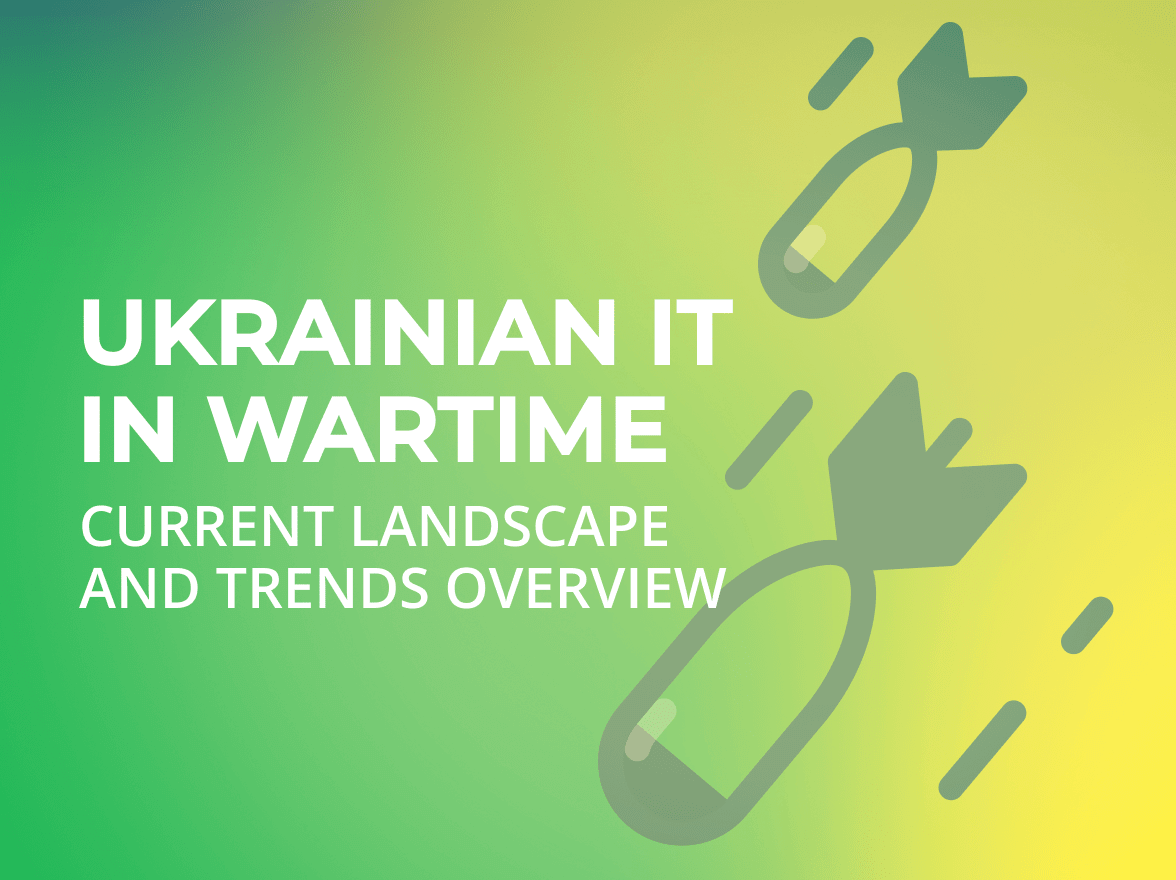
The article highlights the main changes and trends in the Ukrainian software development market caused by the full-scale military invasion that started in February 2022.

The main cooperation models and their characteristics, criteria and an algorithm for choosing the appropriate model for a software development project.
you're currently offline